It looks like you're using an Ad Blocker.
Please white-list or disable AboveTopSecret.com in your ad-blocking tool.
Thank you.
Some features of ATS will be disabled while you continue to use an ad-blocker.
Rise like Nefertem from the blue water lily, to the nostrils of Ra, and come forth upon the horizon each day
Rejoice a rejoicing of the god because of the Eye-of-Horus in its name of flesh! Nefertum! I am Thoth and I appease you with the
Eye-of-Horus.

There will not be a day that lacks its owed illumination. Pass on, O creatures, pass on, O world! Listen! I have ordered you to! I am the cosmic water lily that rose shining from Nun's black primordial waters, and my mother is Nut, the night sky. O you who made me, I have arrived, I am the great ruler of Yesterday, the power of command is in my hand.
-- Spell 42, The Book of the Dead
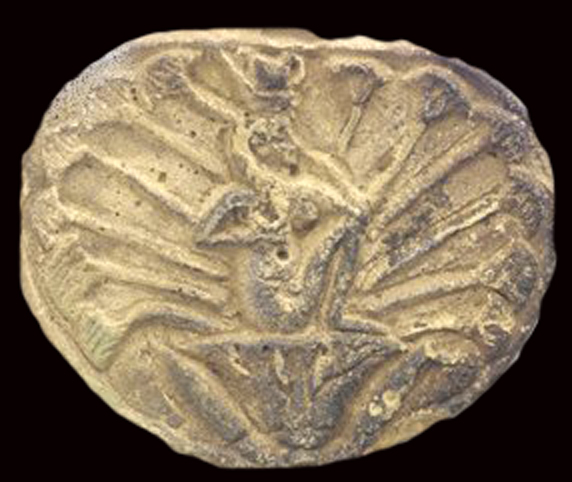
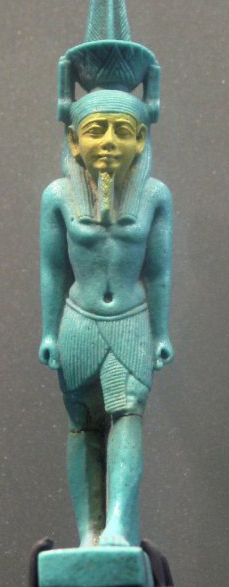
The above illustration shows Nefertem rising from the blue Lotus as the essence of the sun, the sum of perfection, either side of the Deity are six reeds parting as the lines that mark the twelve hours of day, which Nefertem manifests.
God Nefer-Tem, originally a god from Hermopolis, became the original third member of the mother-father-son Memphite triad, . His name means “young atum” (the sun in its youth, the rising sun) and his importance is considerable in the Egyptian concept of the origin of life at Hermopolis. The legend describes a lotus flower rising from the water. As the lotus flower opens, a scarab is revealed, then metamorphoses into a young boy crying. As his tears fall, they create humanity. We find allusions to this in the Pyramid Texts. In the Text of Unas (last king of the 5th Dynasty), it is said: “Unas has risen like Nefer-Tem from the lotus to the nostrils of Ra, and he goes forth from the horizon on each day…” By claiming to be the living incarnation of Nefer-Tem, a king claimed the power of creation.
The lotus was said to have arisen from the waters after the explosive interaction as a bud, which floated on the surface, and slowly opened its petals to reveal the beetle, Khepri, inside. Khepri, an aspect of Ra representing the rising sun, immediately turns into a weeping boy - Nefertum (young Atum), whose tears form the creatures of the earth. In later Egyptian history, as the god Khepri became totally absorbed into Ra, the lotus was said to have revealed Ra, the boy, straight away, rather than Ra being Khepri temporarily.
And I will say to Ptah, Lord of Truth:
"Give me my fair one tonight."
The river is like wine.
The god Ptah is its tuft of reeds,
The goddess Sekhmet is its bouquet of flowers,
The goddess Yadyt is its water lily bud,
The god Nefertem is its opened water lily.
My love will be happy!
The dawn illuminates her beauty.
-- 19th Dynasty Love Poem, Harris 500 papyrus
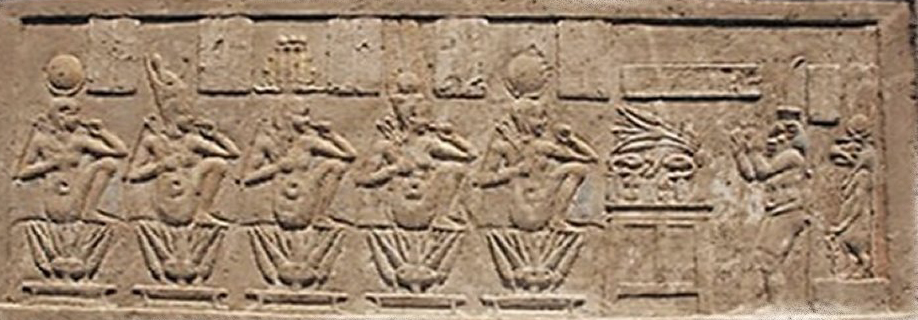
The god of the blue water lily was Nefertem, a god not just linked to the sun but to beautification and healing. It was he who brought a water lily to the sun god Ra, to help ease the suffering of his aging body. The perfume of this flower was not only pleasing to the Egyptians, but they saw it as healing as well. Scenes show women holding the water lily and people being offered the flower at parties, smelling its divine fragrance. Some people today believe that the Egyptians used this plant as a narcotic both for its healing qualities and as a recreational drug when soaked in wine, though this is a hotly debated topic.
The Osiris Ani, whose word is truth, saith:- I am the holy water lily that cometh forth from the light which belongeth to the nostrils of Ra, and which belongeth to the head of Hathor. I have made my way, and I seek after him, that is to say, Horus. I am the pure blue water lily that cometh forth from the field [of Ra].
One of their earliest creation myths envisioned the first place in the world as a mound of earth emerging from the waters of a universal ocean. Here the first life form was seen as a lily, growing on the peak of the primeval mound. To the Egyptians, the lily was connected with a god named Nefertum, whose name means "perfect and complete". Nefertum was honored as a harbinger of the sun, which rose from the lily's petals to bring life to the newly created world. Even the mound itself was deified as a god named Tatjenen, meaning "the emerging land"
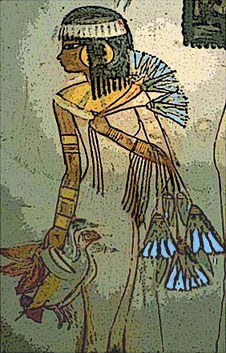
As to his role as a lion-headed god, Nefertem could be more war-like. He was known as khnr t3wy, 'Restrainer of the Two Lands', giving him an identity as a guardian-protector of both Upper and Lower Egypt.
In art, Nefertum is usually depicted as a beautiful young man having blue water lily flowers around his head, although, as the son of Hathor-Bast, or Sekhmet, he also sometimes has the head of a lion or is a lion or cat reclining. It might be furthur conjectured that Hathor-Bast in the function of Venus Evening Star would be involved with conception.
He was sometimes depicted as a man with the head of a lion or as a reclining lion or cat. In this form he was associated with the lion god Maahes who may have been his brother, but may also have been an aspect of Nefertum.
Nefertum! I am Thoth and I appease you with the Eye-of-Horus, Nefertum who protects the Two Lands, Lord of Ka's, Horus of Victory,having brought you your meal of what is in heaven, and what is on earth.
Your meal is the meal of Horus. Your meal is the meal of Seth. You have satsified Horus with his eye. You have satified Seth with his testicles. What you have sought is brought for you. What you have requested is brought for you.
You have counted it in libations of wine. I am Thoth who brings you the bright Eye-of- Horus in its name of white bread, that you might become erect through it in its name of Benben.
Every good fresh thing has entered for you into your house, comprising hundreds, thousands, ten-thousands, hundred-thousands, and millions. I appease you,
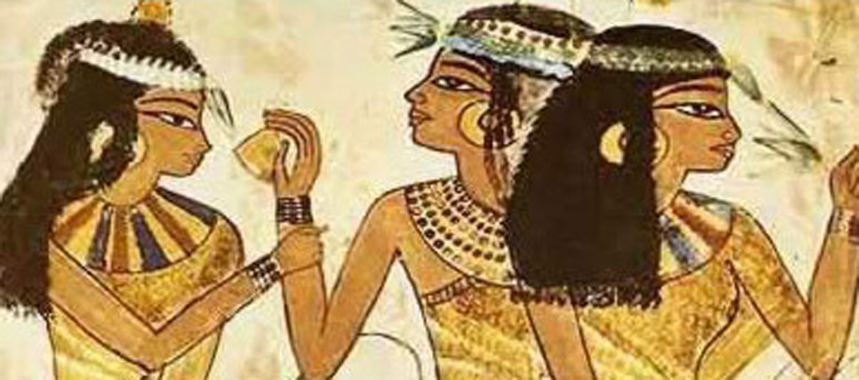
Originally associated with the earth, Atum gradually became considered to be the sun, as it passes the horizon. The separateness of the two instances per day that this occurs, led to the aspect of Atum that was young, namely the rising sun, becoming considered a separate god, named Nefer-atum , and consequently Atum became mainly understood as the setting sun.
In art, Atum was always considered as a man, enthroned, or sometimes standing, and depicted wearing both the crown of Upper Egypt, and that of Lower Egypt. Atum was originally a serpent, a form to which he was said to be destined to return when the world ends, only changing into a human during its existence
The Memphite creation myth stated that Atum was conceived in the heart of Ptah and was created by his word. Literally, "he who completes, or perfects"
I am Atum, the creator of the Eldest Gods
I am he who gave birth to Shu
I am that great He-She
I am he who did what seemed good to him
I took my space in the place of my will
Mine is the space of those who move along
like those two serpentine circles.
History made real. That, music and caffeine was a nice beginning to my day…
It's good to rise to something other than doom, gloom and paranoia…
I already had that. So far we have earthquakes, asteroids and Ukrainian skullduggery. Thats why I appreciate threads like yours. Good work…
(i'm still playing that song)
Kantzveldt
I am Atum, the creator of the Eldest Gods
I am he who gave birth to Shu
I am that great He-She
I am he who did what seemed good to him
I took my space in the place of my will
Mine is the space of those who move along
like those two serpentine circles.[/align]
Atum defined as the "complete one" in en.wikipedia.org...
Fits in with Jehovah = "the existing One" in the old testament.
www.biblestudytools.com...
The rest Eye of Horus and Lotus flower is just Egyptian version of charkas to me. Different names different symbols describing he same thing.
Some people seem to speak "spiritual meta language". A video about Karma.
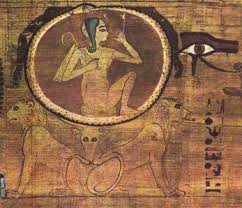
Yes the Atum is complete and perfect in the sense of the Ourobos, the perfect serpentine circle regarding transition through death back to live, and the Divine child Nefer-atum completes that circuit and begins it.
Also then associate with the lion guardians of the Eastern and Western horizons, the entrance out of and into the Underworld, the eye of Horus being the eye of consciousness, a masculine counterpart to the feminine eye of Hathor, the two constituting the eyes of Ra.
Kantzveldt
reply to post by intrptr
It's good to rise to something other than doom, gloom and paranoia...
Agreed
-
Trudeau Resigns! Breaking
Mainstream News: 17 hours ago, 29 flags -
January 6th report shows disturbing trend (nobody is shocked)
US Political Madness: 13 hours ago, 22 flags -
The Truth about Migrant Crime in Britain.
Social Issues and Civil Unrest: 15 hours ago, 11 flags -
Let's talk planes.
General Chit Chat: 12 hours ago, 5 flags -
Inexplicable military simulation - virtual reality showdown in the night..
The Gray Area: 14 hours ago, 2 flags
-
Stuck Farmer And His Queue Jumping Spawn
Rant • 8 • : TimBurr -
Trudeau Resigns! Breaking
Mainstream News • 68 • : MindBodySpiritComplex -
Greatest thing you ever got, or bought?
General Chit Chat • 22 • : 727Sky -
Live updates: Congress meets to certify Trump's presidential election victory
US Political Madness • 19 • : KrustyKrab -
-@TH3WH17ERABB17- -Q- ---TIME TO SHOW THE WORLD--- -Part- --44--
Dissecting Disinformation • 3953 • : 777Vader -
Judge rules president-elect Donald Trump must be sentenced in 'hush money' trial
US Political Madness • 37 • : JadedGhost -
Post A Funny (T&C Friendly) Pic Part IV: The LOL awakens!
General Chit Chat • 7997 • : KrustyKrab -
Meta Llama local AI system is scary good
Science & Technology • 42 • : Arbitrageur -
January 6th report shows disturbing trend (nobody is shocked)
US Political Madness • 57 • : KrustyKrab -
Let's talk planes.
General Chit Chat • 8 • : KrustyKrab
